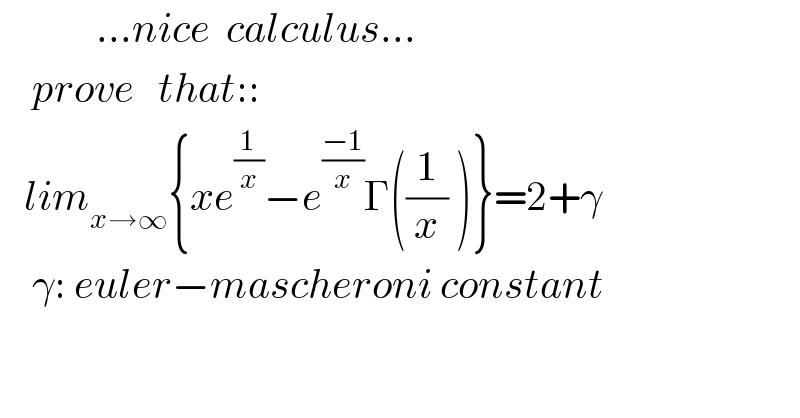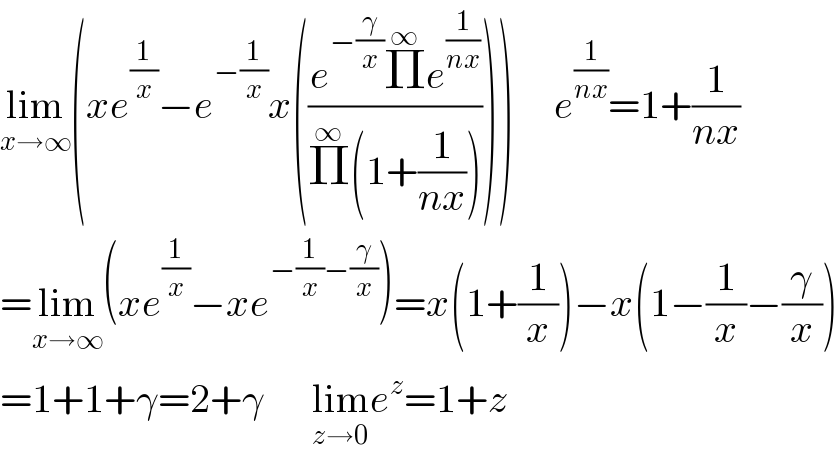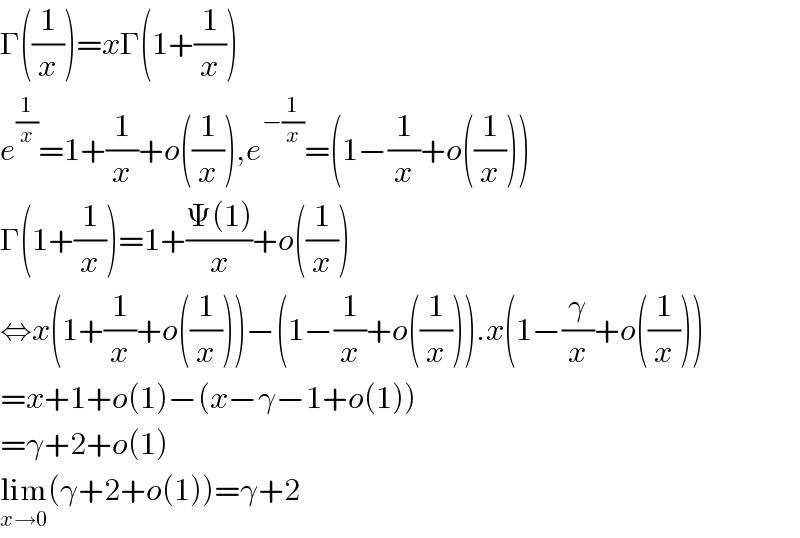
Question and Answers Forum
Question Number 124831 by mnjuly1970 last updated on 06/Dec/20

Answered by Dwaipayan Shikari last updated on 06/Dec/20

Commented by mnjuly1970 last updated on 06/Dec/20

Commented by Dwaipayan Shikari last updated on 06/Dec/20

Answered by mindispower last updated on 06/Dec/20

Commented by mnjuly1970 last updated on 06/Dec/20

Answered by mnjuly1970 last updated on 06/Dec/20
![(1/x)=_(t→0) ^(x→∞) t lim_(t→0) [(1/t)e^t −e^(−t) Γ(t)] =lim_(t→0) (((e^t −e^(−t) Γ(t+1))/t)) =_(rule) ^(hopital) lim_(t→0) (((e^t +e^(−t) Γ(t+1)−Γ′(t+1)e^(−t) )/1)) =1+1−ψ(1)=2−(−γ)=2+γ ✓](Q124871.png)
